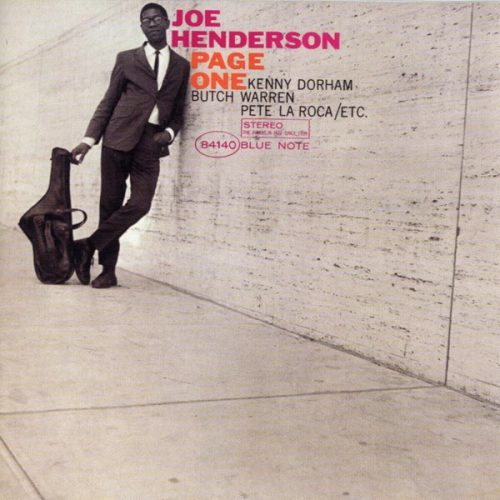September 4, 2013
On October 28, 1990, the San Francisco Jazz Festival presented tenor saxophonist Joe Henderson and tabla player Zakir Hussain in one of its renowned Sacred Space concerts at Grace Cathedral, the stained glass Gothic place of worship on Nob Hill. During the sublime show, Henderson left the stage and, unbeknownst to the audience, ascended to an upper level of the cathedral and reappeared in a passageway opening in the back. There he rejoined his duo partner from on high as the startled crowd turned around and saw him with a spotlight trained on his tall, slender body. It was an awe-inspiring moment where Henderson appeared as a god-like figure majestically and buoyantly praying on his boldly rich tenor. This took place shortly before his career was resurrected with a series of critically acclaimed albums in the ‘90s and a little over a decade before he died at the age of 64.
Henderson’s illustrious recording life began in the early ‘60s with Blue Note. He launched as a leader in 1963 with his Blue Note debut, Page One, a remarkable quintet session featuring trumpeter Kenny Dorham, his collaborator, who contributed two originals to the six-track album as well as penned the liner notes where he claimed the “goateed astronaut of the tenor sax” was “one of the most musical young saxophonists to show since Charlie Parker.” It was high praise that Henderson fully exhibited on Page One, which included the stellar rhythm section of bassist Butch Warren, drummer Pete LaRoca and pianist McCoy Tyner, who is referred to as “etc.” on the album cover since he had just signed a contractual record deal with Impulse!.
The hard bop-steeped album not only opened ears in the jazz world to Henderson’s ebullient tenor saxophone voice, but it also helped to establish him as a go-to session man for other Blue Note recordings, most notably classic albums by Horace Silver (Song for My Father), Lee Morgan (The Sidewinder) and Andrew Hill (Point of Departure), all released in 1964.
Page One opens with a Dorham doubleheader: the upbeat, bossa-tinged “Blue Bossa,” where the trumpeter and tenor play the infectious lead with harmonic beauty before Henderson delivers a smoky, spirited solo, and the balladic “La Mesha,” played with soulful tenor grace.
The rest of the album features Henderson’s impressive originals including the driving blues “Homestretch” with fiery solos by both front-liners as well as a rollicking break by Tyner and a splashing drum run by LaRoca, and the swinging “Jinrikisha” that Henderson sings through with his energetic tenor improvisations. The highlight of the collection is Henderson’s bossa-tinged “Recorda Me,” not only a jazz standard today but also a tune that he never tired of playing, evidenced by him keeping it in his repertoire throughout his leader days. Page One closes with the blues creeper, “Out of the Night,” brilliantly swung into action by the rhythm team and showcasing arguably the strongest Henderson improvisational stretch.
Page One is Henderson’s “Call me Ishmael,” the auspicious beginning of the tenor saxophonist’s heralded narrative of top-tier jazz.







